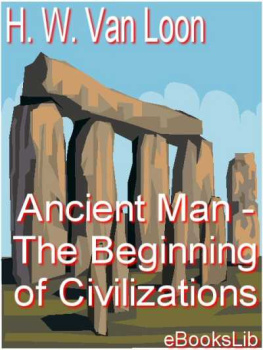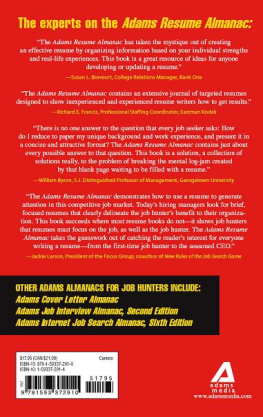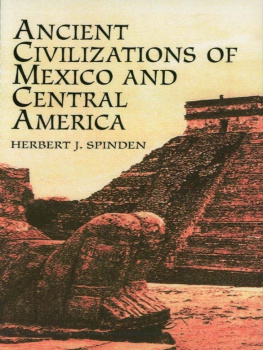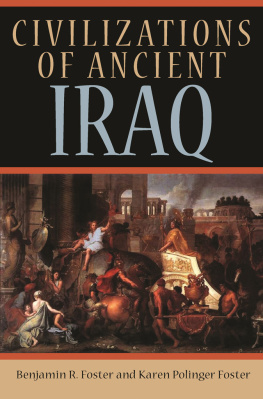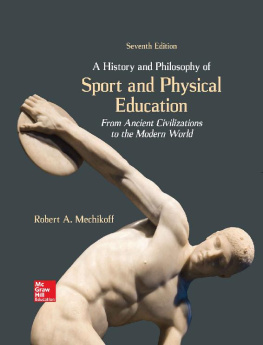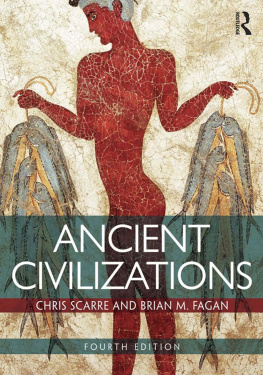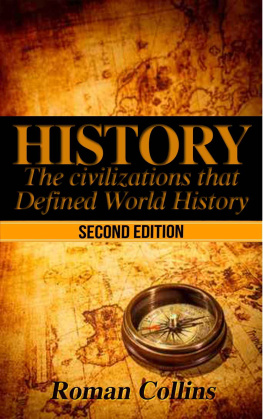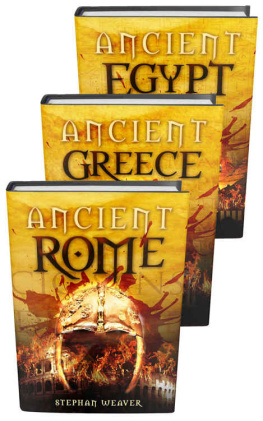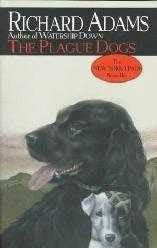Ancient Civilizations of the New World
Essays in World History
William H. McNeill and Ross E. Dunn, Series Editors
Ancient Civilizations of the New World, Richard E. W. Adams
Dialogues Across Civilizations: Sketches in World History from the Chinese and European Experiences, Roxann Prazniak
Energy in World History, Vaclav Smil
Coming Full Circle: An Economic History of the Pacific Rim, Eric Jones, Lionel Frost, and Colin White
The Industrial Revolution in World History, Peter N. Stearns
Essays in World History
First published 1997 by Westview Press
Published 2018 by Routledge
711 Third Avenue, New York, NY 10017, USA
2 Park Square, Milton Park, Abingdon, Oxon OX14 4RN
Routledge is an imprint of the Taylor & Francis Group, an informa business
Copyright 1997 Taylor & Francis
All rights reserved. No part of this book may be reprinted or reproduced or utilised in any form or by any electronic, mechanical, or other means, now known or hereafter invented, including photocopying and recording, or in any information storage or retrieval system, without permission in writing from the publishers.
Notice:
Product or corporate names may be trademarks or registered trademarks, and are used only for identification and explanation without intent to infringe.
Library of Congress Cataloging-in-Publication Data
Adams, Richard E. W., 1931
Ancient civilizations of the New World / Richard E.W. Adams.
p. cm.(Essays in world history)
Includes bibliographical references and index.
ISBN 0-8133-1382-1 (he).ISBN 0-8133-1383-X (pbk)
1. Indians of MexicoAntiquities. 2. MexicoAntiquities.
3. Indians of Central AmericaAntiquities. 4. Central America
Antiquities. 5. Indians of South AmericaAntiquities. 6. South
AmericaAntiquities. I. Title. II. Series.
F1219.7.A33 1997
980.012dc21
97-15752
CIP
ISBN 13: 978-0-8133-1383-2(pbk)
To the memory of my grandparents, Charles K. Wood and Mary K. Wood
The duty of acknowledging intellectual and other debts incurred in the writing of this book is a pleasant task. One can recognize many people who have contributed directly to the immediate book and also thank others less directlythough no less importantlyinvolved in ones intellectual journey. First, I must thank the editors of this series, William McNeill and Ross Dunn, for their forbearance, encouragement, and not least, their courage. Rene Millon, Rebecca Gonzalez Lauck, Jeremy Sabloff, Michael Moseley, and Craig Morris all furnished permission to reproduce badly needed maps and site plans. My gratitude to them all for their collegiality and generosity. A figure that lies behind nearly all my work in archaeology is my former graduate advisor and always colleague, Gordon R. Willey. His broad interests, profound knowledge, and comparative skills have encouraged me to attempt to emulate him in different ways. Finally, I must acknowledge the constant and unstinting support of my wife, Jane Jackson Adams, who I trust will be pleased with this latest result of an intellectual partnership that has lasted over forty years.
Richard E.W. Adams
1
Introduction:
Complex Cultures, Cities, and a Rapid Survey of the Earliest Old World Civilizations
During the morning, we arrived at a broad causeway and continued our march towards Iztapalapa, and when we saw so many cities and villages built in the water and other great towns on dry land and that straight and level causeway going towards Mexico, we were amazed and said that it was like the enchantments they tell of in the legend of Amadis, on account of the great towers and cues [temples] and buildings rising from the water, and all built of masonry. And some of the soldiers even asked whether the things we saw were not a dream.
Bernai Diaz del Castillo,
The Discovery and Conquest of Mexico, 1956
In many of the Incas houses there were large halls some two hundred paces in length and fifty to sixty in breadth. They were unpartitioned and served as places of assembly for festivals and dances when the weather was too rainy to permit them to hold these in the open air. In the city of Cuzco I saw four of these halls, which were still standing when I was a boy... and the largest was that of the Cassana, which was capable of holding three thousand people.
Garcilaso de la Vega,
Royal Commentaries of the Incas, 1966
Bernai Diaz was a product of the European Renaissance and had seen the grand cities of Moorish Spain. He was not easily impressed, but the first sight of the great Aztec capital overwhelmed him and his comrades with its extraordinary setting and grandeur. He retained this sense of wonder at what they had seen and done for the next sixty years of his long life and transmitted it to us by way of his memoirs, written in his old age. Similarly, the Spanish conquerors of the Inca realm, eleven years later, experienced difficulty in comprehending such a different and yet remarkable cultural tradition. As the colonial period continued through 350 years, and as the mixture of Iberian and Native American cultures produced a new set of civilizations, memories and information about the original high cultures were largely reduced to the status of legend or myth, and the achievements of the natives were discounted and denigrated. However, eyewitness accounts survived, both of the conquest itself and of the native cultures. Spanish churchmen were largely responsible for writing about the latter, but even these books and manuscripts were relegated to dusty archives in Spain or to decrepit monastic repositories and libraries in Spain s former colonies, the new national states of Latin America.
Fortunately, historical research and archaeological work of the last 150 years have enabled us to recover a great deal of what seemed irretrievably lostfor instance, information on periods so remote that even the sixteenth-century Native American descendants had lost track of what had happened. This book is intended to present a synthesis of some of the new information now available about the two New World areas of civilized societies. It is by no means exhaustive, and it may not be agreeable to many specialists. However, it is hoped that the book will provide a summary of most of the important happenings in the prehistoric past as well as of perspectives given us by comparison with Old World civilizations and various theoretical views. Before going farther, it is necessary to define the concepts of culture and civilization.
New World archaeologists are trained as anthropologists, which means that we share with the social anthropologists a great many common views. One of the most basic is that of culture itself. Cultures are composed of traditional patterned behaviors that are systemically related and that are transmitted from generation to generation in a social group. The many components of cultures may be broken down as institutions. Major cultural institutions common to all cultures, no matter how simplified, include kinship, social structure, associations, economics, ideology (including religion), legal systems, and political systems. All cultures have sets of motivating beliefs; some have called these core values. The belief in the superiority of social status achieved by individual effort (as opposed to inheritance) is a typical core value in the United States. For the purposes of this book, it should be pointed out that patterned behavior often leaves material traces. Traditional houses built of adobe or stone will still be detectable centuries after they fall down. Varying social statuses are often reflected in the different styles of housing found in an ancient community, with the rich living in larger and better-made structures, and most people dwelling in smaller houses made of less costly materials.


